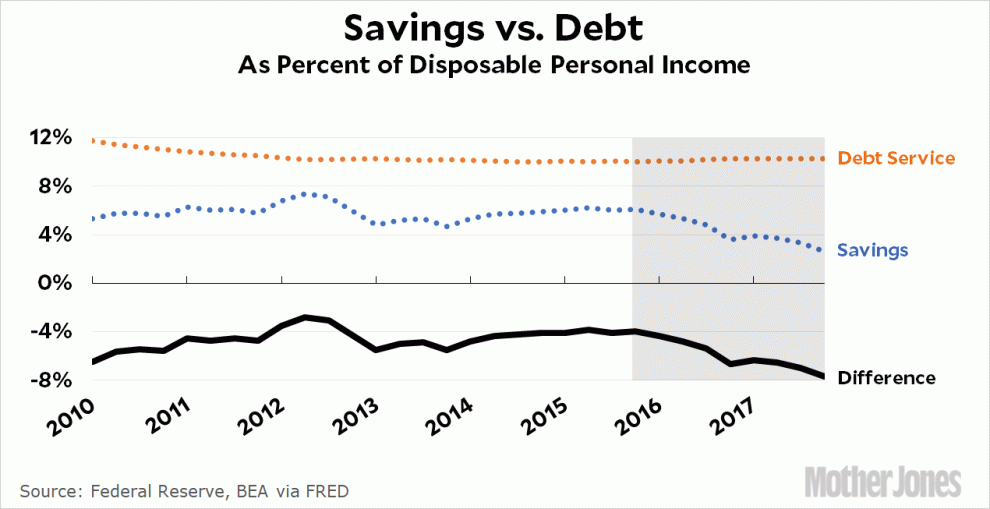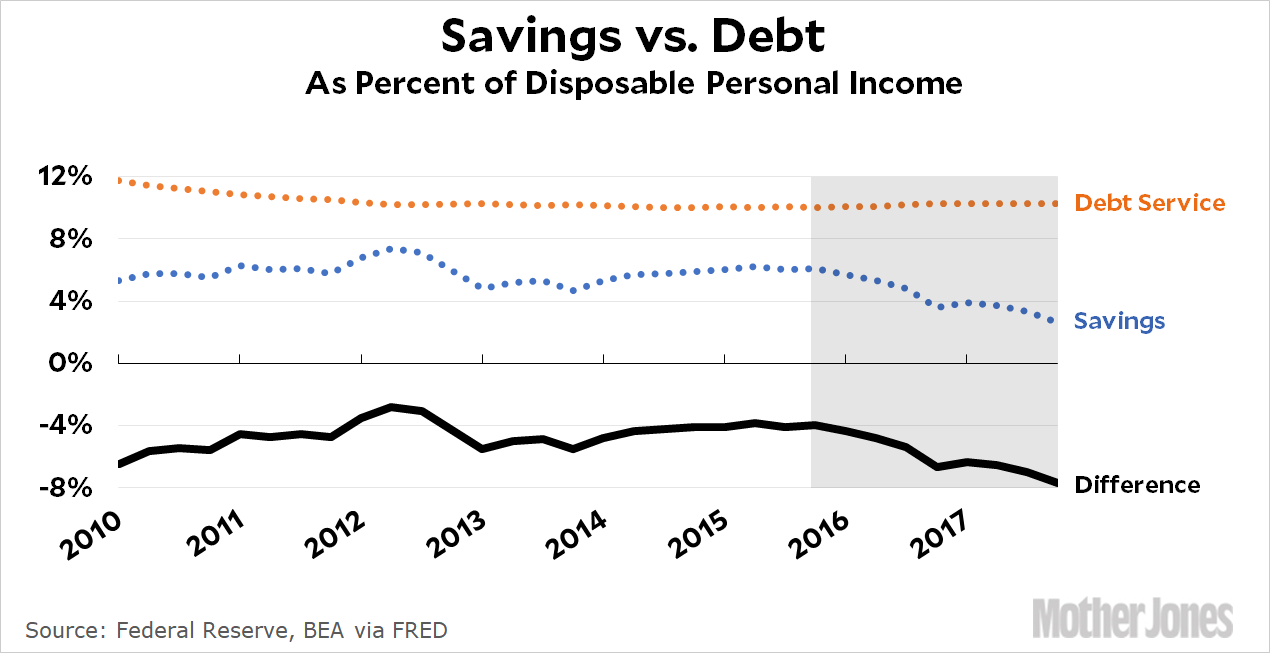
The personal savings rate is suddenly under scrutiny. On Friday the Washington Post ran a piece calling it a “red flag” in the middle of otherwise good economic news. Today the Wall Street Journal reported on the latest numbers from the Commerce Department, noting that savings have fallen to their lowest rate in more than a decade.
There are various ways of looking at this. Here’s one:

After the Great Recession, the savings rate stayed steady because households were paying off debt primarily by reining in spending. This was not great for the economy, but it was good for personal finances. Between 2010 and the end of 2015, the difference between debt and savings improved from -6 percent to -4 percent.
That changed two years ago. Since the beginning of 2016, savings have plummeted, but this money is not being used to pay off debt, which has stayed about the same. It’s being used to buy stuff. The difference between debt and savings has fallen from -4 percent to -8 percent.
This is obviously not sustainable. When savings start to run out, households can keep up their spending for a while by maxing out their credit cards. Eventually, though, they have no choice but to cut back on consumption, something that will almost certainly stall the economy when it happens. Before long, that stall will turn into a recession.
There are actually lots of red flags in the economy right now. My guess—which is worth what you paid for it—is that the US economy will continue to hum along in 2018, buoyed by the Republican tax cut and the economic recovery in the rest of the world. But I suspect it doesn’t have much longer than that. Right now, I imagine that Republicans are holding their collective breath, praying for the economy to crash precisely in November, after it can’t affect the midterm elections, and then recover precisely a year later, when the 2020 elections start to approach. They might get their wish.















